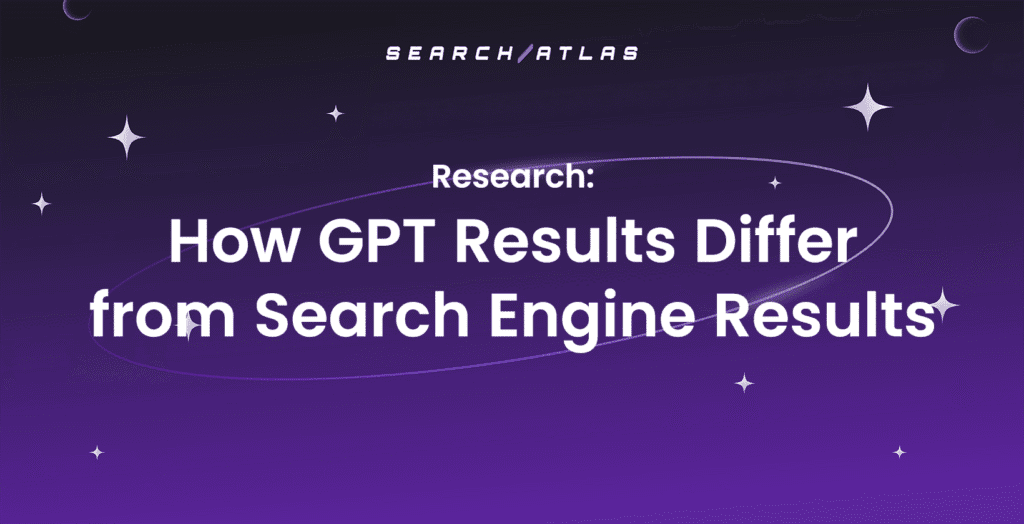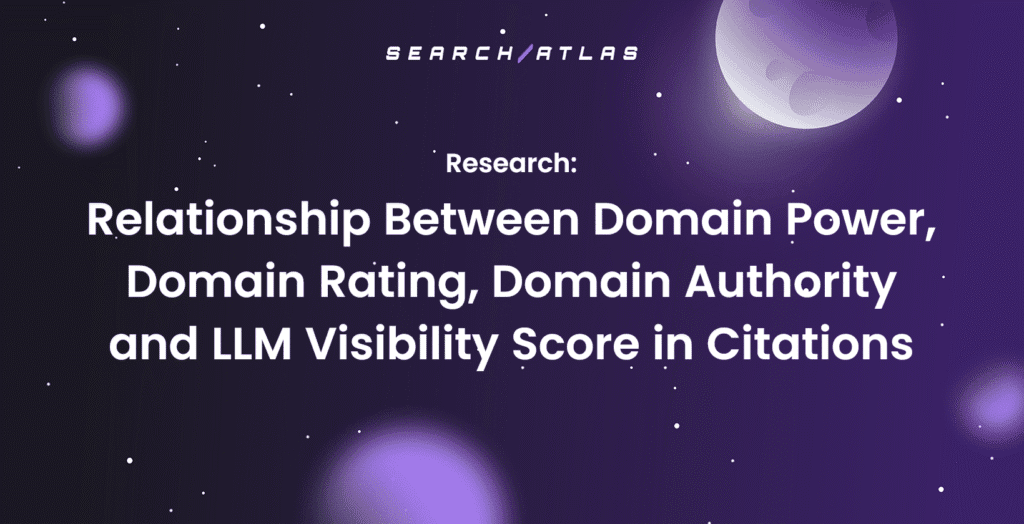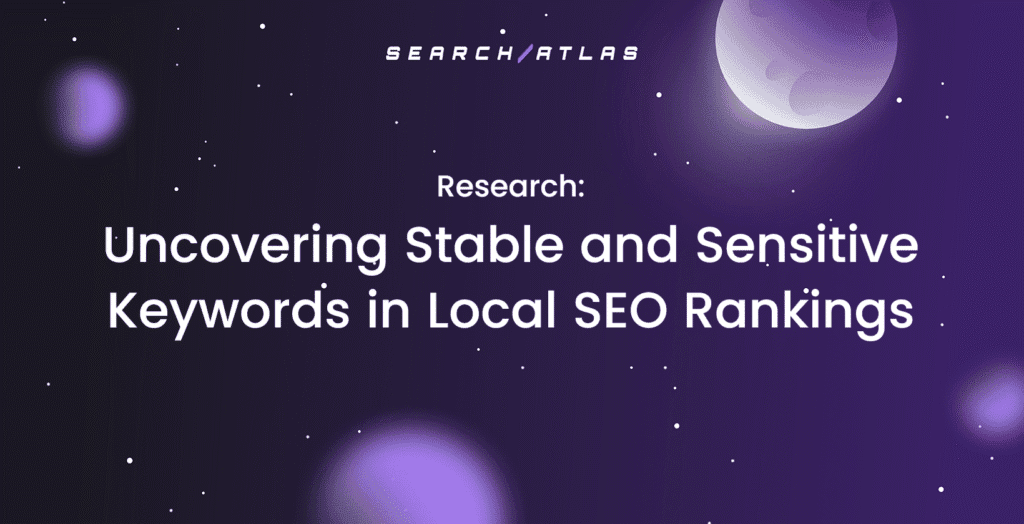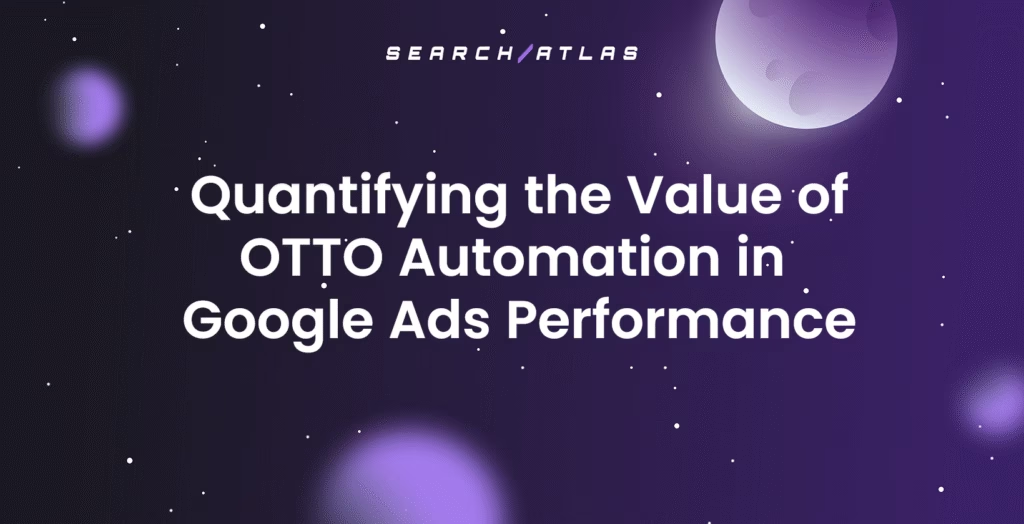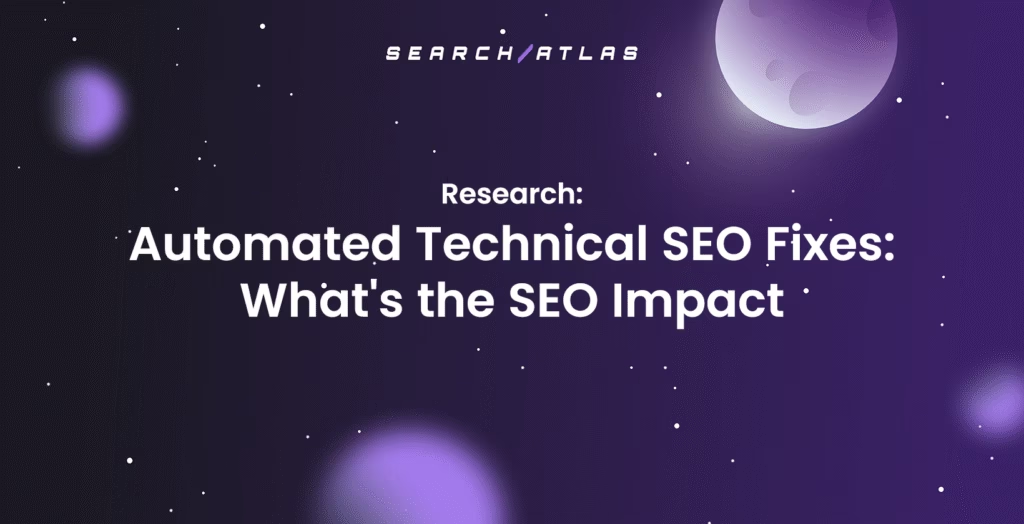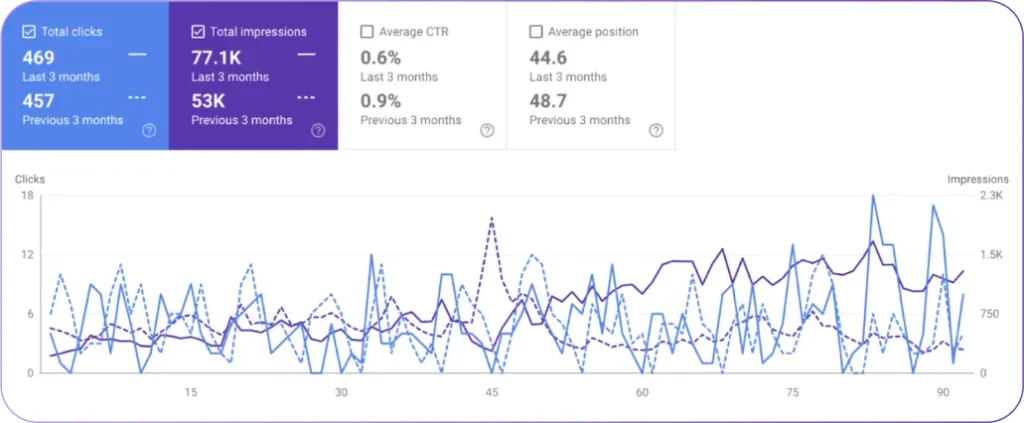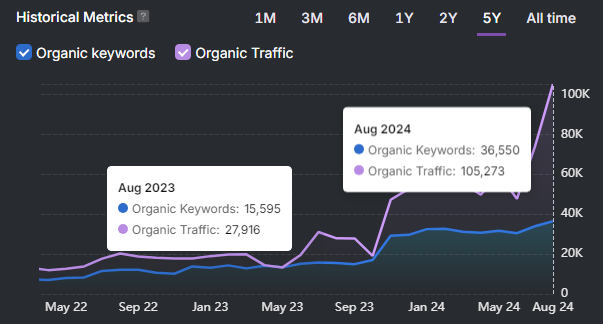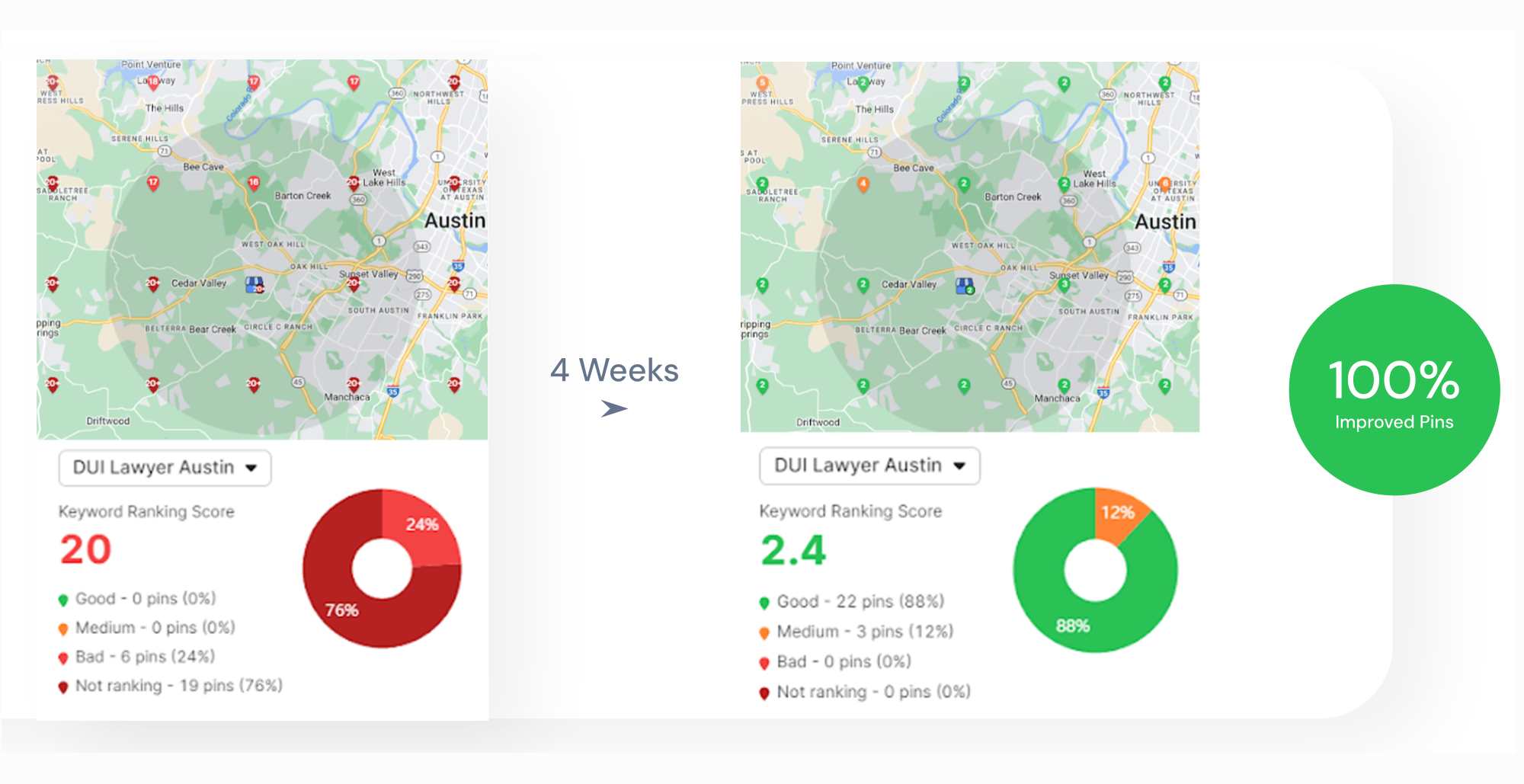You may also read a concise version of this research in our blog: From Research to Reach: Optimizing Academic Content for Search Engines.
1. Executive Summary
This white paper delivers a comprehensive analysis of the factors affecting the rankings of scholarly content in search engine results, utilizing data from the SCHOLAR dataset (Semantic Content Heuristics for Objective Language Assessment and Review). By conducting detailed correlation and regression analyses, we explore the relationships between various content attributes—namely readability, clarity, entity richness, keyword density, topical authority, domain strength, and crawl frequency—and their influence on query relevance scores.
Our investigation reveals that certain factors, such as topical authority, content clarity, crawl frequency, and entity scores, significantly bolster search rankings and increase web traffic. In contrast, broader domain authority appears to have a lesser effect on rankings. These findings offer valuable insights for academic content creators and SEO specialists, providing them with targeted strategies to optimize scholarly work for enhanced visibility, reach, and user engagement. By focusing on the identified key attributes, stakeholders can strategically improve the discoverability and effectiveness of academic content within search engine ecosystems.
2. Introduction
In the contemporary digital landscape, the visibility of scholarly content is a critical determinant of its academic impact. Search engines, acting as the primary gateways to scholarly resources, significantly influence how content is accessed, consumed, and cited. Despite their importance, the complexity of ranking algorithms poses a considerable challenge, particularly within academia, where accuracy, clarity, structured information, topical authority, and crawlability are essential components of content.
This white paper aims to unravel these complexities by conducting an in-depth analysis of quantifiable content metrics and their influence on search engine rankings. Leveraging the comprehensive SCHOLAR dataset, we seek to provide actionable insights into the attributes that most strongly correlate with enhanced query relevance.
Through rigorous correlation and regression analyses, we delve into the impact of key factors such as topical authority, domain strength, and crawl frequency on ranking positions. Our findings are designed to equip academic content creators with the knowledge needed to strategically enhance the discoverability and impact of their scholarly work. By understanding and optimizing the attributes that drive search engine visibility, stakeholders can position their content more effectively within the academic ecosystem, thereby improving its reach and engagement.
3. Methodology
Data Collection & Preparation
This study leverages the SCHOLAR dataset, which includes a comprehensive array of metrics extracted from a diverse selection of scholarly content. Key metrics analyzed include readability scores, content clarity, keyword density, entity scores, topical authority, domain strength, and crawl frequency. These metrics were chosen for their potential impact on search engine rankings and their representation of essential characteristics of scholarly content.
The data preparation process involved several critical steps to ensure the accuracy and reliability of the analysis:
- Handling Missing Data: To address missing data points, median imputation was applied. This method replaces missing values with the median of the respective metric, minimizing bias introduced by missing entries. In cases where data gaps were too significant to provide reliable imputation, those entries were excluded from the dataset to maintain the integrity of the analysis.
- Normalization: All numerical features within the dataset were normalized using z-score normalization. This technique standardizes the data, ensuring that each metric has a mean of zero and a standard deviation of one, which facilitates comparability across different metrics and prevents any single metric from disproportionately influencing the analysis.
- Outlier Removal: Outliers can significantly skew statistical analyses. Therefore, outlier detection and removal were performed using interquartile range (IQR) filtering. This method identifies data points that fall outside of 1.5 times the interquartile range above the third quartile and below the first quartile, which are then excluded from the data set.
Analytical Techniques
The analytical phase of this study employed a combination of correlation and regression analyses, designed to uncover and quantify the relationships between content metrics and search engine rankings:
- Correlation Analyses:
- Pearson Correlation: This technique was used to detect linear relationships between metrics. It provides a measure of the strength and direction of association between two continuous variables, facilitating the identification of key factors that might directly influence ranking outcomes.
- Spearman Correlation: To capture monotonic relationships that may not be strictly linear, Spearman correlation was utilized. This non-parametric measure of rank correlation assesses how well the relationship between two variables can be described using a monotonic function.
- Regression Analyses:
- These analyses aimed to quantify the influence of specific metrics—such as topical authority, domain strength, and crawl frequency—on search engine ranking positions. Multiple regression models were used to understand the individual and combined effects of these variables, providing insights into their relative importance and impact on rankings.
To enhance the clarity and interpretability of the findings, various visualizations were employed. These included:
- Correlation Matrices: These provided a visual summary of the correlation coefficients between all pairs of metrics, highlighting the strongest relationships.
- Scatter Plots: Used to illustrate the relationship between individual metrics and search rankings, offering a visual representation of trends and deviations.
- Regression Coefficient Plots: These plots displayed the magnitude and direction of the influence of each metric within the regression models, offering a clear depiction of which factors are most impactful.
This methodological approach ensures a robust and comprehensive analysis, enabling the identification of actionable insights for optimizing scholarly content for improved search engine visibility and academic impact.
4. Analysis and Results
The investigation produced several key results:
1. SCHOLAR correlations against ranking:
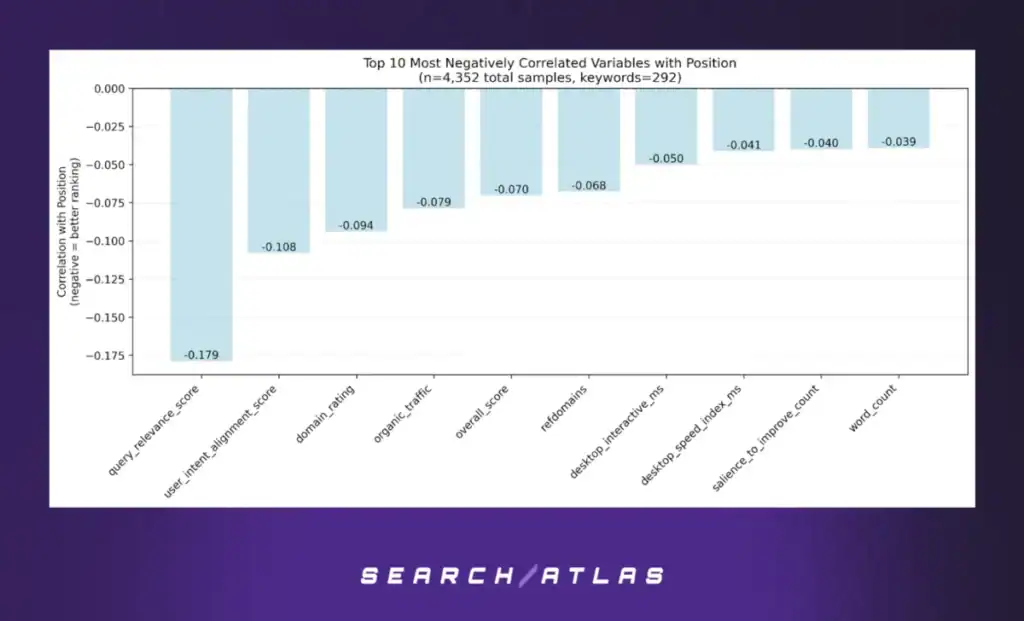
A more negative correlation with position implies a better ranking (since lower numerical position = better rank).
- query_relevance_score (−0.179) and user_intent_alignment_score (−0.108) show the strongest associations with improved rankings.
- Metrics like domain_rating, organic_traffic, and overall_score also contribute meaningfully.
- Even small differences (e.g., word count) contribute directionally toward improved ranking when optimized.
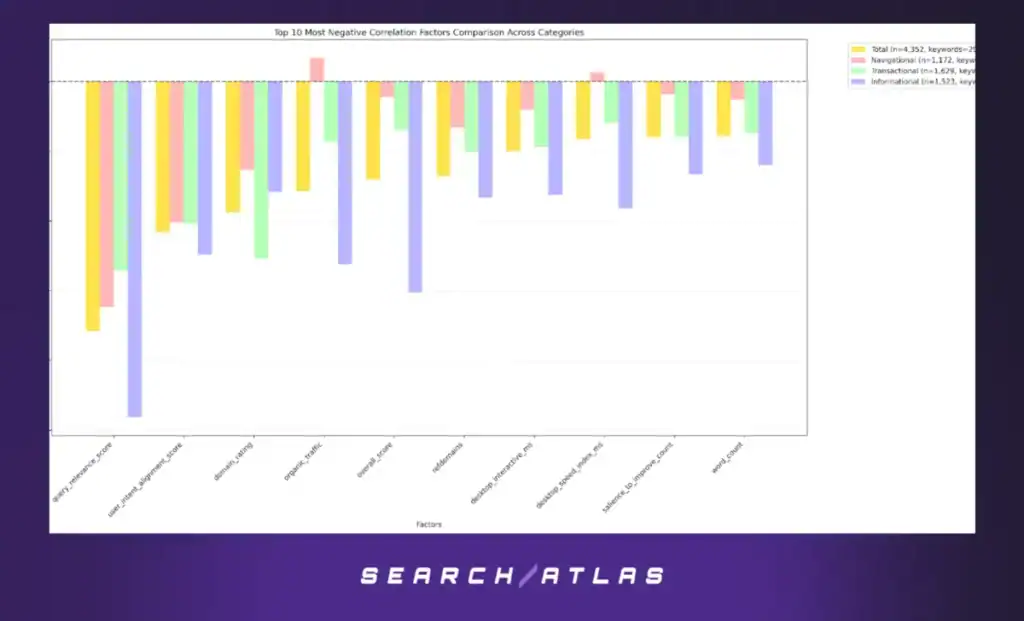
Shows how the top correlation factors vary across keyword categories—Navigational, Transactional, and Informational.
- query_relevance_score and user_intent_alignment_score have stronger impacts across all keyword types, especially in transactional queries.
- Informational keywords show the strongest correlation across almost all factors, indicating that content quality and alignment matter most when users are seeking knowledge or research.
- Navigational keywords have slightly weaker correlations, likely because users already know what they’re looking for.
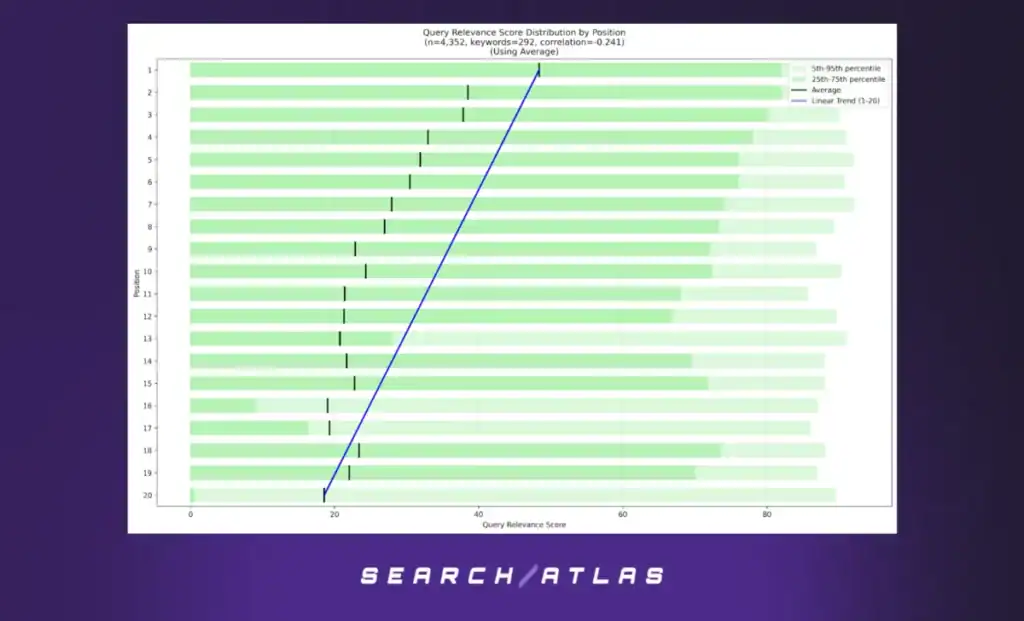
Visualizes how query_relevance_score varies by ranking position (1 to 20).
- There is a clear inverse relationship between query relevance and position—higher relevance scores correspond to better (lower) positions.
- The linear trend reinforces the negative correlation found in the first plot (approx. −0.241).
- This further validates that query relevance is a key driver of rank performance.
2. Crawl correlations:
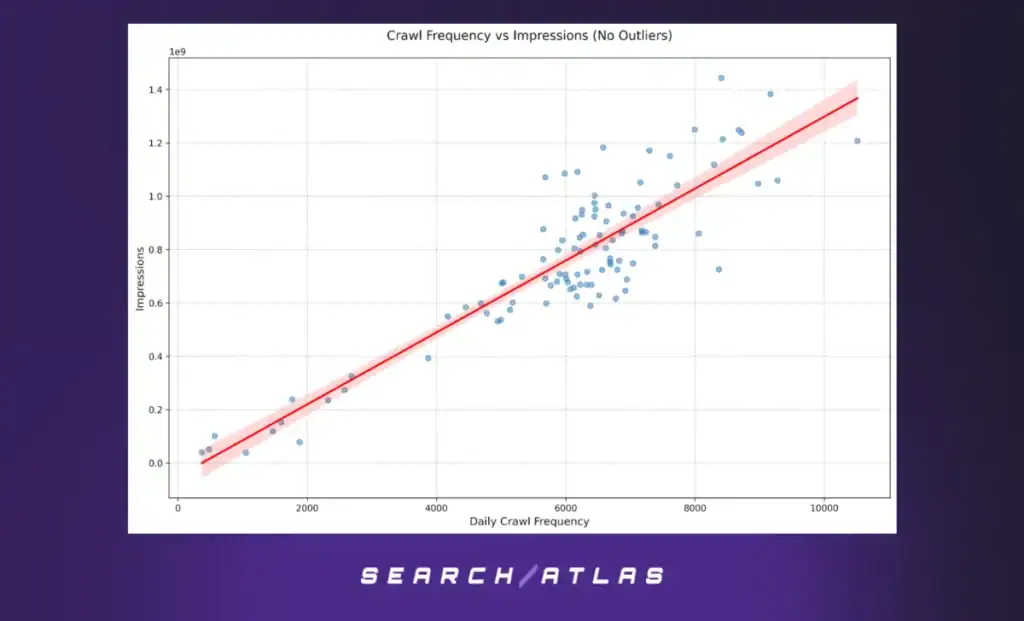
There’s a strong positive linear relationship between crawl frequency and the number of impressions.
- More frequent crawling by search engines is associated with higher visibility, suggesting that actively crawled pages are indexed and exposed to users more often.
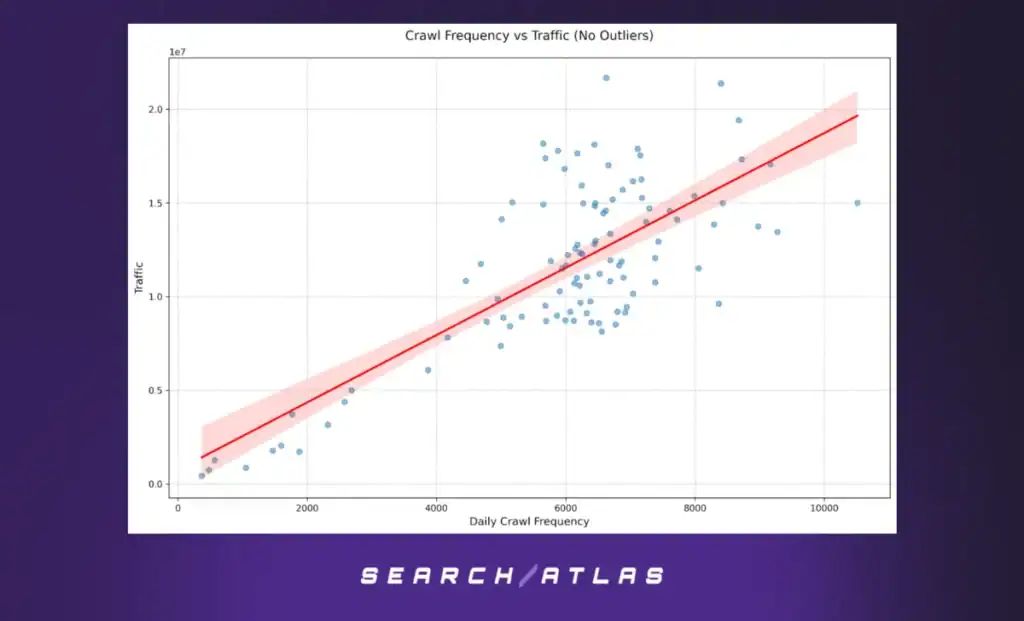
A clear positive relationship exists between crawl frequency and organic traffic.
- Sites that are crawled more frequently tend to receive significantly more traffic, reinforcing the importance of keeping content crawlable and fresh.
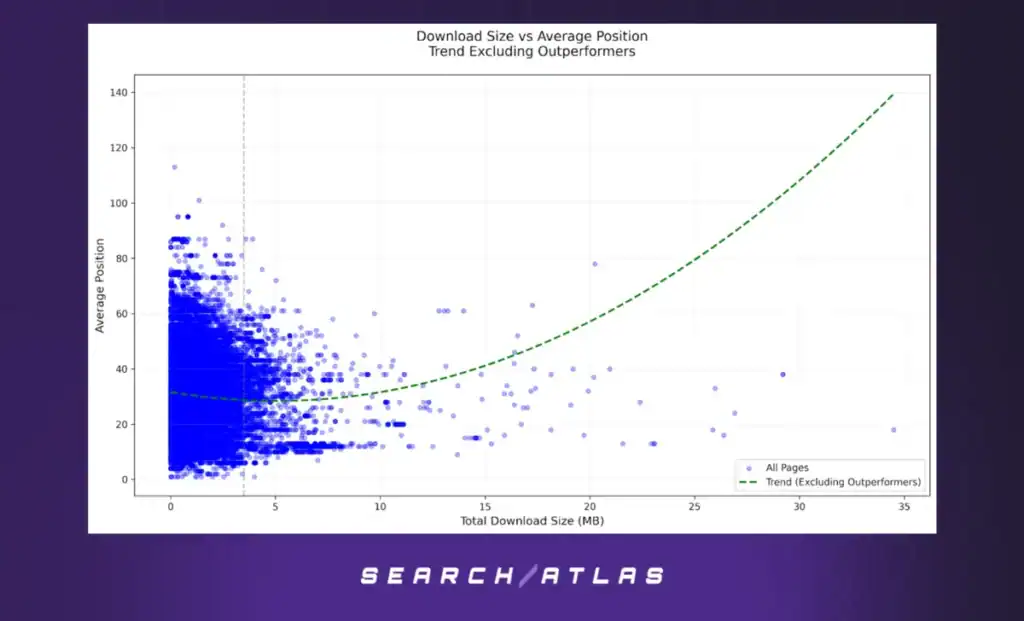
The trend shows a parabolic shape—pages with extremely large download sizes tend to rank worse.
- Excessive page size can hurt performance, likely due to slower load times or poor user experience. Pages in the ~1–5 MB range perform better than heavier pages.
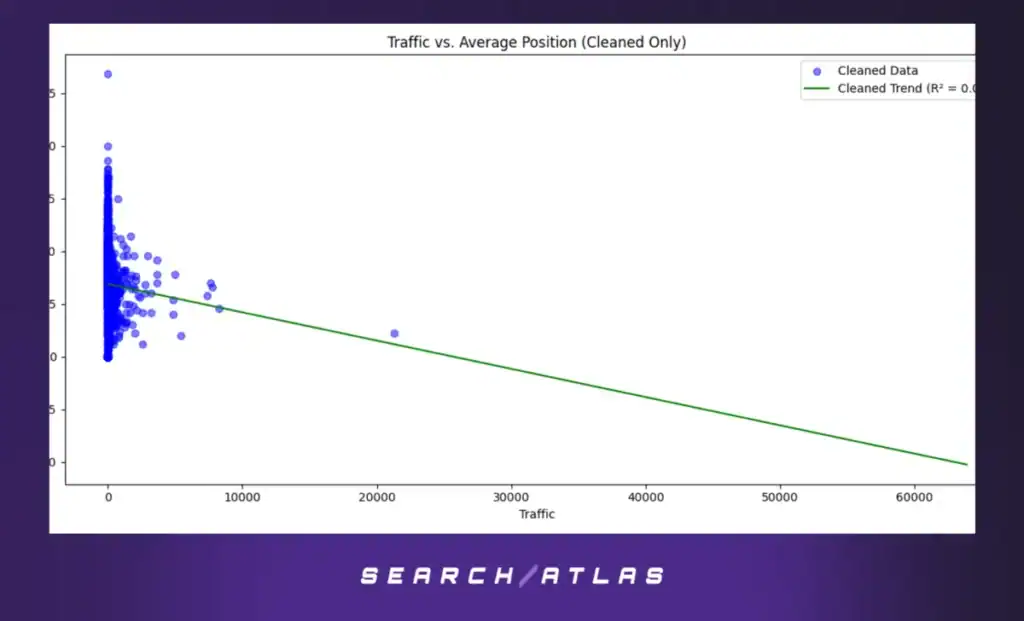
There’s a weak inverse relationship between traffic and average position; pages with more traffic tend to rank better, but the correlation is small (R² = 0.003).
- High-traffic pages generally rank better, but traffic alone isn’t a dominant ranking factor—it likely reflects the outcome of other optimization efforts (like relevance, authority, and crawlability).
3. Topical authority and domain strength:
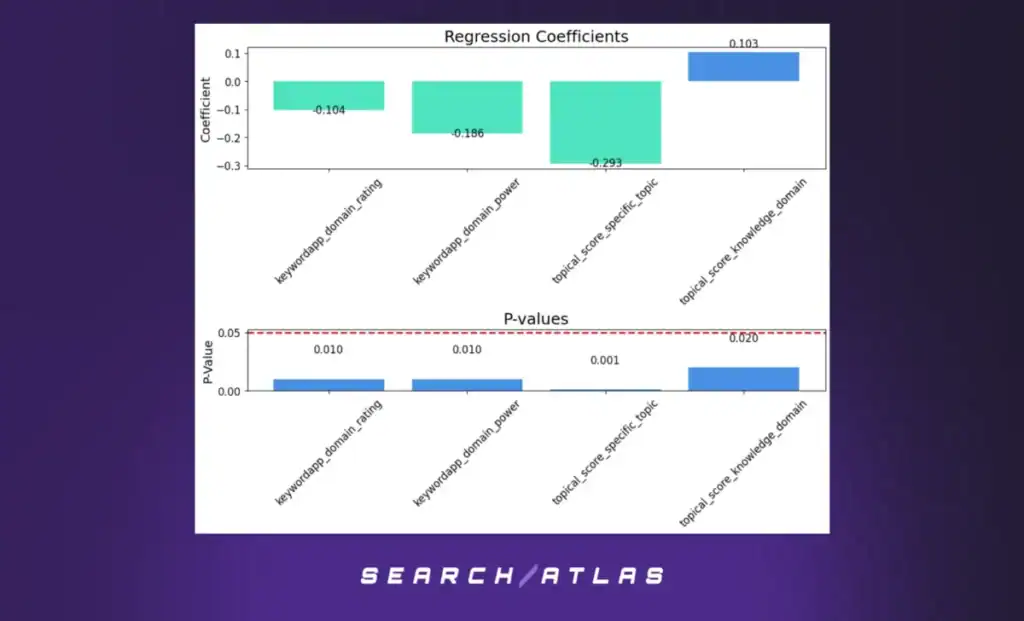
- topical_score_specific_topic has the largest (most negative) coefficient (−0.293), indicating the strongest positive effect on improving ranking (since lower positions = better ranking).
- keywordapp_domain_power (−0.186) and keywordapp_domain_rating (−0.104) also contribute positively to ranking improvement.
- topical_score_knowledge_domain (0.103) has a positive coefficient, meaning it’s slightly associated with worse rankings.
- All p-values are below 0.05, indicating that all variables are statistically significant:
- topical_score_specific_topic: 0.001
- keywordapp_domain_power: 0.010
- keywordapp_domain_rating: 0.010
- topical_score_knowledge_domain: 0.020
- Specific topical authority (deep, narrow subject expertise) is the most influential and reliable ranking factor.
- Domain-level power and rating contribute positively to rankings but to a lesser extent.
- Broad topical authority, while still statistically significant, might slightly hinder ranking performance, likely because generic content is less valued than focused expertise.
- The consistency of results across plots reinforces the robustness and reliability of the regression findings.
- Discussion and Implications
The findings of this study significantly enhance our understanding of how to optimize scholarly content for improved search engine rankings. By analyzing the SCHOLAR dataset, we’ve identified key factors that contribute to better visibility and engagement for academic materials. The implications of these results are multifaceted and offer practical guidance for content creators and platforms hosting scholarly work.
Key Implications:
1. Prioritization of Content Attributes
The study underscores the importance of prioritizing specific topical authority, crawl frequency, and structured, entity-rich content. These attributes have been shown to significantly boost search rankings and traffic. Academic content creators should focus on developing authoritative and well-structured content that is frequently updated and easy for search engines to crawl.
2. Enhancements for Scholarly Platforms
Platforms hosting scholarly content can benefit from enhancing their metadata and employing structured tagging of entities. Improving site crawlability can lead to better indexing, increased impressions, and enhanced traffic performance. By implementing these strategies, platforms can ensure that their content is more discoverable and effectively reaches their target audience.
3. SEO Strategy Alignment
The study emphasizes the need for SEO strategies to focus on specialization, crawlability, and specific topical authority. These strategies align with Google’s current preference for content that demonstrates expertise, experience, authoritativeness, and trustworthiness (E-E-A-T principles). By aligning with these principles, academic content can achieve greater relevance and authority in search engine results.
Limitations:
Several limitations of the analysis should be considered when interpreting the results:
- Causality: The study’s reliance on correlation and regression analyses means that causality cannot be definitively established. The relationships identified indicate associations rather than direct causative effects.
- Dataset Bias: Potential biases within the SCHOLAR dataset may influence the results. The dataset’s representation of scholarly content and its metrics may not fully capture the diversity of factors affecting rankings.
- Omission of External Factors: The analysis does not include external SEO factors such as backlinks or broader domain authority, which could also influence search engine rankings.
Future Research Directions:
To build on these findings, future research should explore several avenues to deepen our understanding of scholarly content optimization:
- Controlled Experiments: Conducting controlled experiments could help validate the causal relationships suggested by the correlation and regression analyses.
- Broader Academic Datasets: Expanding the analysis to include a broader range of academic datasets encompassing diverse scholarly disciplines could provide a more comprehensive view of ranking dynamics across different fields.
- Inclusion of External SEO Factors: Incorporating external factors such as backlinks, user engagement metrics, and broader domain authority into future studies could offer a more holistic understanding of what influences search rankings in the academic context.
By addressing these limitations and exploring these future research directions, the academic and SEO communities can continue to refine strategies for enhancing the visibility and impact of scholarly content in an increasingly competitive digital environment.
6. Conclusion
This white paper sheds light on the pivotal factors that enhance the optimization of scholarly content for search engines, offering a roadmap for academic content creators and SEO strategists seeking to improve the visibility and impact of their work. Through an in-depth examination of the SCHOLAR dataset, our study identifies specific topical authority, crawl frequency, content clarity, entity richness, and balanced keyword density as critical elements that contribute to higher search engine rankings and increased traffic.
Key Findings:
- Specific Topical Authority: Establishing authority in specific academic topics emerges as a crucial driver of search engine visibility. Content that demonstrates expertise and authority in its field is more likely to achieve higher rankings, aligning with search engines’ emphasis on authoritative content.
- Crawl Frequency: Regularly updated content that is easily accessible to search engines enhances crawl frequency, thereby improving indexing and ranking potential. This finding underscores the importance of maintaining fresh and accessible content to capture search engine attention effectively.
- Content Clarity and Entity Richness: Clear, well-structured content enriched with relevant entities not only improves user engagement but also aids search engines in understanding and categorizing academic materials accurately. This clarity and richness enhance the relevance and authority of the content in search results.
- Balanced Keyword Density: While keyword usage remains a factor, our analysis highlights the importance of balance. Overloading content with keywords can be detrimental, whereas a balanced approach ensures relevance without compromising content quality.
Strategic Implications:
These insights offer empirically-supported guidance for optimizing scholarly content. By focusing on the identified factors, content creators can strategically position their academic work to achieve greater discoverability and impact. This approach aligns with the evolving landscape of search engine algorithms, which increasingly prioritize content that demonstrates expertise, authority, and trustworthiness (E-E-A-T principles).
Advancement in Scholarly Content Optimization:
The findings from this study mark a strategic advancement in the field of scholarly content optimization. By understanding and leveraging the relationships between key content attributes and search engine performance, academic institutions, publishers, and individual researchers can enhance the reach and influence of their scholarly contributions in the digital realm.
Moving forward, the integration of these strategies into content creation and SEO practices promises to elevate the academic community’s ability to disseminate knowledge effectively and widely, thereby amplifying the impact and engagement of scholarly resources across the globe.
7. References
Google. (2023). “How Search Works.” Retrieved from https://www.google.com/search/howsearchworks/
Smith, J. (2022). Understanding Search Algorithms. Academic Press.
SCHOLAR Dataset Documentation. Internal resource, Search Atlas.


